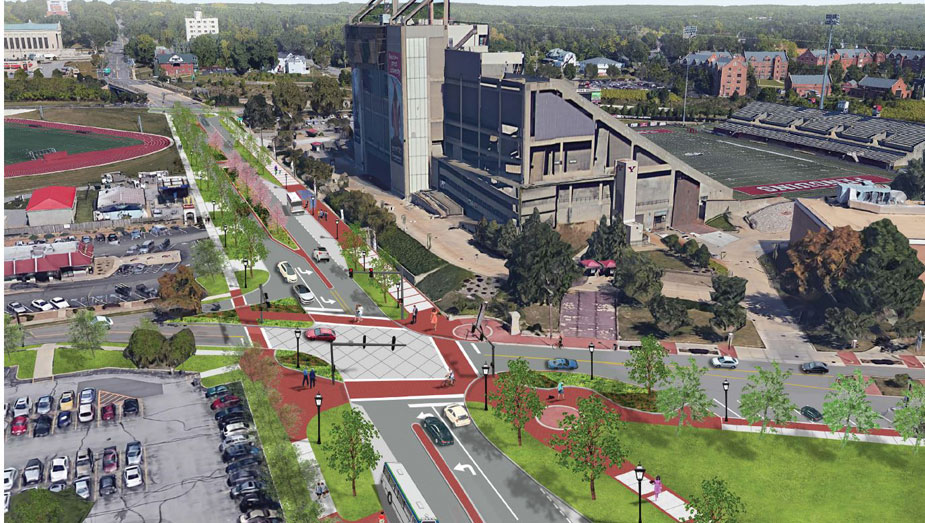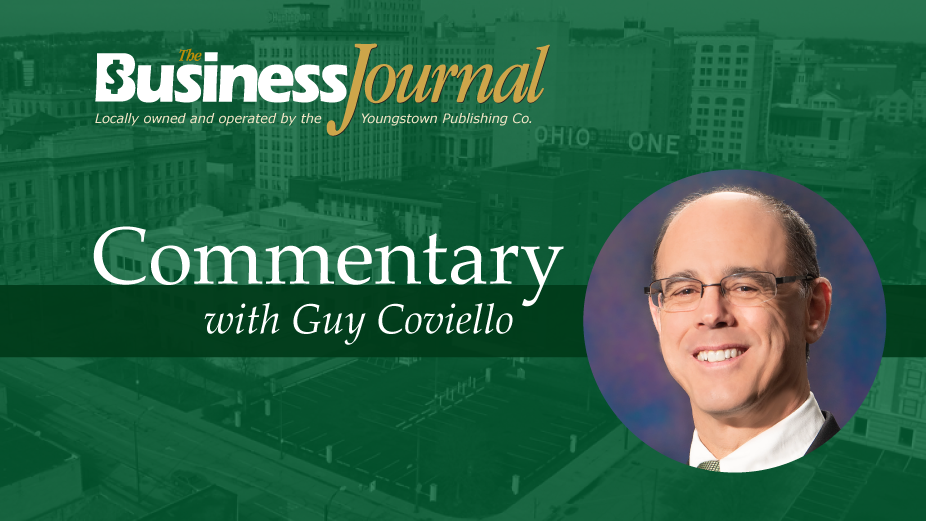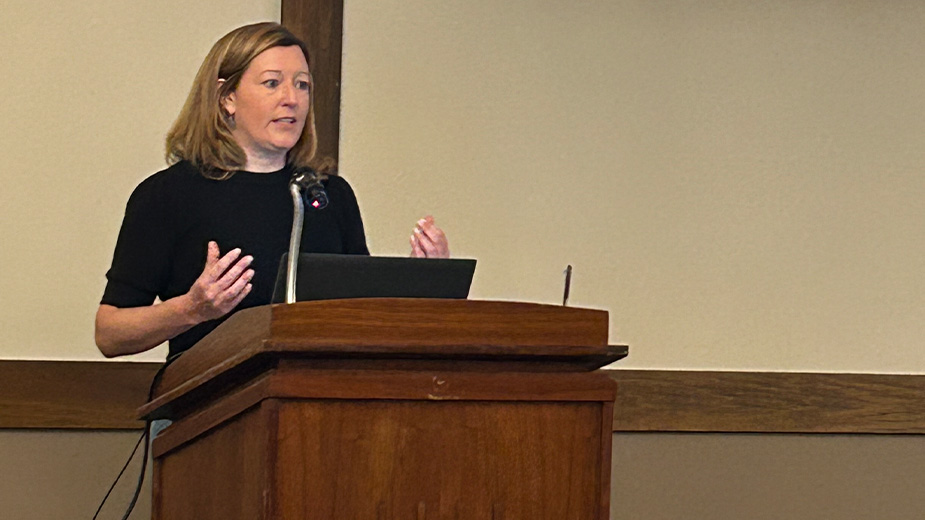Smart2 Planners Preview Fifth Avenue Upgrades
YOUNGSTOWN, Ohio – Imagine Fifth Avenue rebuilt as a boulevard, with a median in the middle, multiuse lanes for biking and other activities in each direction and tree lawns on both sides of the street.
Then contemplate adjacent streets upgraded to accommodate current traffic, as well as driverless shuttles conveying riders to destinations around the greater downtown area.
Those are some of the elements local planners have included in the application to capture $10.4 million in federal transportation funds.
A coalition led by Eastgate Regional Council of Governments, the area metropolitan planning agency, is in the final stages of completing an application for a grant from the U.S. Department of Transportation Build program — Better Utilizing Investments to Leverage Development.
“We’re very close. We’re going through some minor revisions and edits with it right now,” said Jim Kinnick, Eastgate’s executive director, Wednesday night. The agency intends to have the application submitted well in advance of the July 19 deadline.
Eastgate hosted an open house at its offices to allow the public to provide input on the plan and the application. If the application is successful, the federal grant would be paired with $10 million in local matching funds and already programmed roadway improvements for the proposed $20.4 million project, the Smart2 Network.
The network would connect the “Strategic & Sustainable, Medical & Manufacturing, Academic & Arts, Residential & Recreational, Technology & Training” – or Smart2 – centers in and around the city’s downtown.
Elements of the plan include putting Fifth Avenue on a “road diet,” Kinnick said, shrinking it from the current six lanes to a divided boulevard with a median and one lane on each side, plus a turning lane and tree lawns along the corridor. In addition to the Fifth Avenue work, also included are enhancements on Commerce, Federal, Front and Phelps streets.
Two proposed autonomous shuttles would connect St. Elizabeth Hospital Youngstown, Youngstown State University, the Western Reserve Transit Authority station downtown, the Youngstown Business Incubator and the Joseph Co. International manufacturing and research campus under construction on the East Side.
The objective of Smart2 is to spur economic development in the area by connecting downtown, Mercy Health’s Belmont Avenue campus and YSU, and to improve overall quality of life, Kinnick said. The project also aims to rescale the size of roads that were developed for a city of 165,000 people to accommodate the needs of today’s 67,000.
“We have too much pavement,” Kinnick said. Using the Build funds, Smart2 – similarly to Fifth Avenue – will reduce Rayen Avenue to three lanes from four and use the remaining right-of-way for multiuse paths and transit bump outs, and implement pedestrian-friendly enhancements.
“Front Street was designed for seven times the capacity it has today, so this application allows us to right-size our streets,” said Sara Daugherty, Eastgate’s economic development program manager.
Shrinking those streets will reduce traffic speed and promote walkability, thereby providing the potential for first-floor retail and service-oriented businesses, which should lead to further residential and office development, Daugherty said
“Certainly anything you can do to make downtown more walkable and accessible will continue to benefit the growth that’s happening, particularly in the business district around the university and as you have more folks living, working and going to school downtown,” Lauren Johnson said.
Johnson, who attended the open house, is manager of the 422 Corridor Project and Mahoning County business development for the Youngstown/Warren Regional Chamber. She was involved with early discussions to see if chamber projects could tie into the Smart2 Network.
Eastgate is working with the state’s DriveOhio initiative, which focuses on the development and implementation of autonomous vehicle technology here, Kinnick said.
“They’re exploring options all over the state. They look to land in smaller cities like ours to test some of these technologies,” he said. “Right now, we’re a perfect fit.”
The driverless technology is “definitely something we need to explore,” said Marianne Vaughn, secretary-treasurer and director of finance for WRTA. “It seems to be the way things are going to go eventually.”
Janet Hazlette, a member of Eastgate’s citizen’s advisory board, said many people don’t recognize the transportation problems they face daily.
“Transit is a huge economic development tool,” she continued. “When this area was growing, transit was a huge part of that.”
Sarah Lowry, director of the Healthy Community Partnership, offered comments about the plan based on the objectives of what her organization is attempting to promote.
“We want to think about transportation as a means for people to get the physical activity they need to live healthy, fulfilling lives,” Lowry said. “The safer we can make our communities, the easier we can make it to get around by walking, biking or accessing transit, which includes a portion of that trip to be done on foot, all of that should be adone without fear and without barriers.”
James Converse, director of Common Wealth Inc., liked the concept that was presented, but lamented that it didn’t extend further north. Common Wealth operates a kitchen incubator and the Cultivate Café on Elm Street north of YSU.
“A lot of these improvements could be made to the Elm Street corridor,” Converse said. “There’s a lot of student traffic up and down the street. There’s walking and bicycle traffic and the safety there could be enhanced by some of those improvements, too.”
“It becomes a money issue, so we’re trying to focus,” Kinnick said. “We’re trying to build some momentum. If w can get this and be successful, we can start the process and continue to look forward.”
If funds became available, the partners “certainly wouldn’t run away from trying to improve some of the additional streets in downtown Youngstown and reaching up further as we go up Fifth Avenue,” he added.
President Donald Trump’s administration has allocated $1.5 billion for the Build grant program and a decision is expected within four to six months, Kinnick said. An application for a similar project under the former Transportation Infrastructure Generating Economic Recovery program competed against more than 430 applications, and only 43 projects were awarded, he pointed out.
“The odds are stacked against us but we feel strong about our application. We were rated highly on the last round,” he said. Following the last round, the partners were debriefed by USDOT and the agency pointed out “opportunities to strengthen our application,” he said.
Some of the changes made as a result are a bigger emphasis on safety, more innovation with the inclusion of the autonomous-vehicle element, the meeting to get public feedback on the project and a larger local match, said Ken Sympson, Eastgate’s director of transportation. The comments received Thursday will be summarized and included with the application.
“We’ll probably do one more review of the application and then submit it, and see what happens,” Sympson said.
Without the grant funds, some of the roadwork will be scaled back and other projects would be delayed, according to Kinnick. “It would take us years to get to all those projects versus trying to complete them all in three years,” he said. Cuts would include the autonomous shuttles, as well as the proposed road diets for Rayen and Commerce.
The project “ties in with the vision that’s come to be throughout all the planning efforts over the years for downtown Youngstown,” Daugherty said. The street enhancements, although not “magical solutions” by themselves, will lead to a better-built environment and potentially to more private investment.
Copyright 2024 The Business Journal, Youngstown, Ohio.



